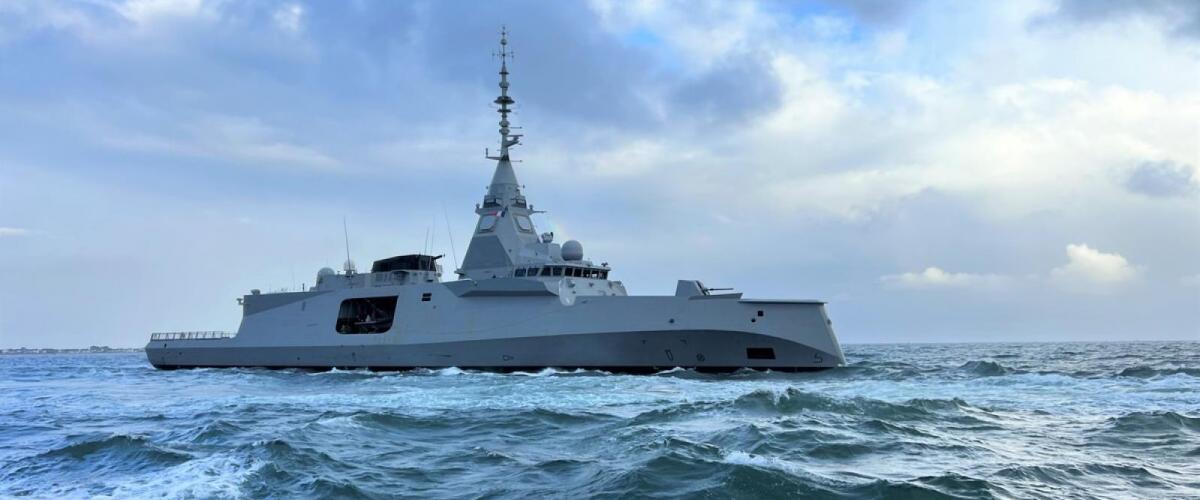For over five years, Naval Group and b<>com have been working together to drive industrial innovation. Their co-developed projects are now focusing on b<>com's expertise in 5G connectivity and human factors. Alexandre Gilquin, Partnership Manager at the Technology Division of Naval Group, and Carole Le Goff, Marketing & Sales Manager at b<>com, provide an update on this partnership and its future.
Alexandre, you oversee the strategic innovation partnership between Naval Group and b<>com in the Technology Division of Naval Group. Can you tell us about the major projects currently in progress?
One key area we're focusing on is 5G technology. We're exploring how this technology can meet our industrial needs by providing secure, high-performance connectivity. This technology is being used in our workshops, where we are digitizing production processes and business applications, as well as in ships under construction and in service, to expand the range of services available to navies.
Alongside b<>com and other industrial and academic members*, we're also engaged in a human factors engineering project, which involves using data to better understand and improve the interaction between digital systems and operators, which is crucial for enhancing the efficiency of our ships.
You’ve been a member of b<>com’s innovation circle for several years. What advantages does an industrial company like yours gain from collaborating with an Institute of Research and Technology like b<>com?
The IRT b<>com enables us to speed up our R&D efforts by providing expertise and a framework for technological research projects.
Working with other industrial and academic partners at b<>com is a significant advantage, as it allows us to share skills, knowledge, and experiences while also mitigating risks.
Additionally, b<>com supports the transfer of innovations to industry at the end of a project, especially through full-scale experiments that test new technologies in real-world environments.

Carole, you manage the relationship between Naval Group and b<>com alongside Alexandre. How do you drive progress in this partnership?
We actively listen to the needs of Naval Group teams, co-developing projects with them to help de-risk their innovations. For instance, we’re collaborating on 5G connectivity, which Naval Group is eager to explore, as well as on human factors engineering. We can also leverage the scientific excellence of our academic members, which is a key advantage for overcoming technological barriers and accelerating innovation, as Alexandre mentioned.
Connectivity and human factors are central to your work with Naval Group. Can you give us an overview of this collaboration?
Regarding 5G connectivity, we are conducting studies on naval connectivity aboard ships in demanding environments and on industrial connectivity in ship production workshops. Large-scale experiments are scheduled for the end of the year, enabling us to test these technologies and innovations in the field.
For human factors engineering, we are collaborating on operator monitoring, which aims to identify the right sensors to measure sailors’ cognitive load on board and to develop adaptive interfaces for the future.

Capteurs facteurs Humains
Alexandre, why did you choose to work with b<>com's teams? What were your requirements or technological roadblocks?
As a leader in naval defense, Naval Group turned to b<>com to help us meet our growing need for secure, high-performance connectivity, innovative architectures, and digital infrastructure.
The IRT model has proven effective at our company. It accelerates the integration of scientific advances, ensures the reliable development of technological building blocks, and prepares them for transfer to our industrial sites.
Together, we drive progress through full-scale experiments on our integration platforms, in workshops, and on ships.
What are the next steps in the innovation roadmap between Naval Group and b<>com?
The next step is conducting full-scale 5G experiments at our Lorient site, scheduled for late 2024. Depending on the results, we’ll prioritize the next phases of work to target high value-added business applications.
More broadly, we’ve developed a four-year collaboration program that we update annually. The aim is to select innovations that will enhance our competitiveness. This is a proven, concrete approach rooted in collaboration with the IRT and other partners.
We are currently outlining the scope of new projects to continue our work on 5G connectivity and human factors.
Other topics, such as augmented reality and the digital transformation of cloud and edge infrastructure, are also under consideration for future collaborations.





